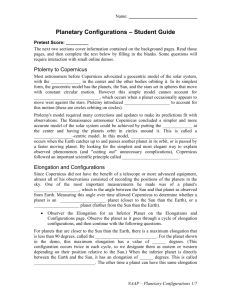Apparent Motion of the Planets
advertisement
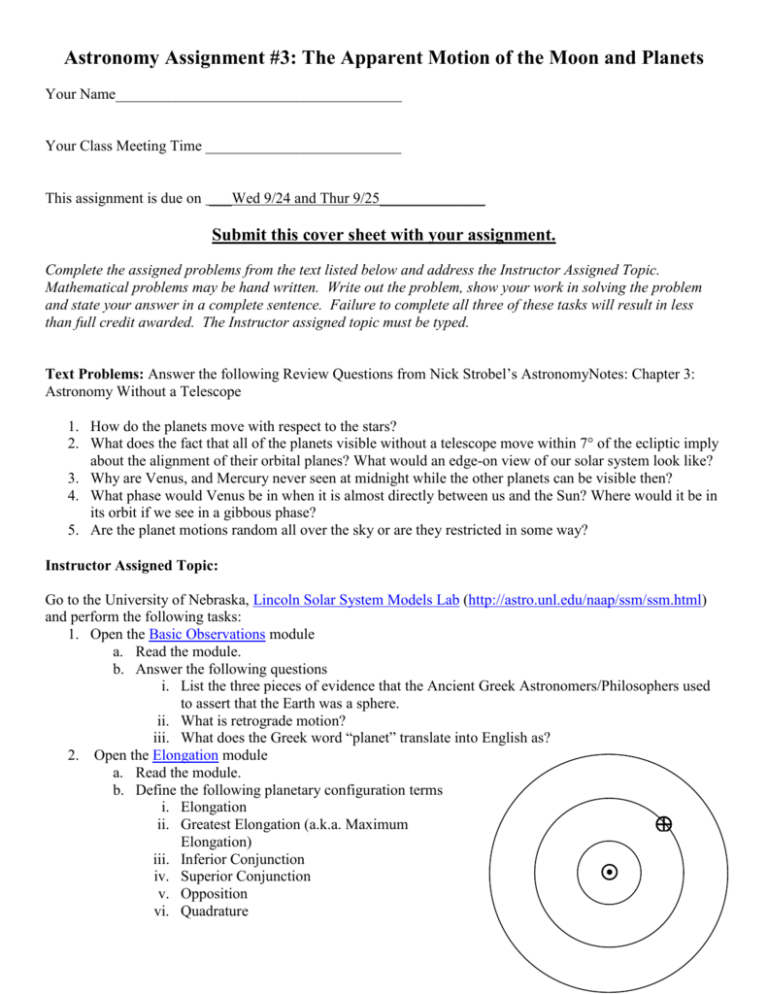
Astronomy Assignment #3: The Apparent Motion of the Moon and Planets Your Name______________________________________ Your Class Meeting Time __________________________ This assignment is due on ___Wed 9/24 and Thur 9/25______________ Submit this cover sheet with your assignment. Complete the assigned problems from the text listed below and address the Instructor Assigned Topic. Mathematical problems may be hand written. Write out the problem, show your work in solving the problem and state your answer in a complete sentence. Failure to complete all three of these tasks will result in less than full credit awarded. The Instructor assigned topic must be typed. Text Problems: Answer the following Review Questions from Nick Strobel’s AstronomyNotes: Chapter 3: Astronomy Without a Telescope 1. How do the planets move with respect to the stars? 2. What does the fact that all of the planets visible without a telescope move within 7° of the ecliptic imply about the alignment of their orbital planes? What would an edge-on view of our solar system look like? 3. Why are Venus, and Mercury never seen at midnight while the other planets can be visible then? 4. What phase would Venus be in when it is almost directly between us and the Sun? Where would it be in its orbit if we see in a gibbous phase? 5. Are the planet motions random all over the sky or are they restricted in some way? Instructor Assigned Topic: Go to the University of Nebraska, Lincoln Solar System Models Lab (http://astro.unl.edu/naap/ssm/ssm.html) and perform the following tasks: 1. Open the Basic Observations module a. Read the module. b. Answer the following questions i. List the three pieces of evidence that the Ancient Greek Astronomers/Philosophers used to assert that the Earth was a sphere. ii. What is retrograde motion? iii. What does the Greek word “planet” translate into English as? 2. Open the Elongation module a. Read the module. b. Define the following planetary configuration terms i. Elongation ii. Greatest Elongation (a.k.a. Maximum Elongation) iii. Inferior Conjunction iv. Superior Conjunction v. Opposition vi. Quadrature 3. 4. 5. 6. c. Copy the diagram to the right and draw a planet in each of the following configurations; opposition, inferior conjunction, superior conjunction and quadrature. Open the Early Modeling (Ptolemy’s Model Simulation [swf]) module and read it. There are no questions to answer. Open the Heliocentrism module and read it. There are no questions to answer. Open the Elongations and Configurations module a. Read the module. b. Answer the following questions i. How are inferior planets different from superior planets? ii. List the planetary configurations that an inferior planet goes through. iii. List the planetary configurations that a superior planet goes through. iv. Why are inferior planets never seen at opposition? v. Why would a superior planet appear brightest, as seen from the Earth, when it is in opposition? Open the Planetary Configurations Simulator [swf] module a. Check the boxes for the following in the simulator i. Label Orbits ii. Show Elongation Angle iii. Pause for 5 seconds iv. Radius of Observer’s planet’s orbit: Select Earth v. Radius of Target planet’s orbit: Select Mercury vi. Start Animation vii. Answer the following Question: In what configuration does Mercury appear to go retrograde (Watch the Zodiac Strip)? b. Set Radius of Target planet’s orbit: Select Mars i. Answer the following Question: In what configuration does Mars appear to go retrograde (Watch the Zodiac Strip)? c. Answer this question: What appears to be the rule for when inferior planets appear to go retrograde and when superior planets appear to go retrograde? 2


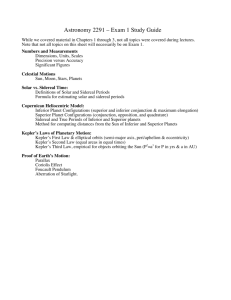
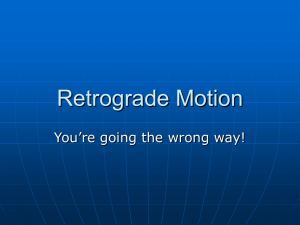
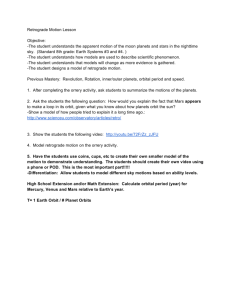
![Boom, Baroom, Baroom buraba [x2] - Newton-British](http://s3.studylib.net/store/data/007145924_1-a330d0f0b9b92fe6628107ec155c3345-300x300.png)




